Philodendron Micans, also known as Velvet-leaf Philodendron, is a stunning tropical plant native to Central and South America. It has gained popularity as a houseplant due to its unique velvety foliage and ease of care.
While low maintenance, the more you know about how to care for your Philodendron Mican will give it the chance to thrive and show off all that makes it a sought-after addition to many indoor plant collections.

What is the Philodendron Micans Plant?
Philodendron Micans, scientifically known as Philodendron hederaceum ‘Micans,' is a species of tropical evergreen vine in the Araceae family. It is a cultivar of Philodendron hederaceum and is often referred to as Velvet-leaf Philodendron due to the velvety texture of its leaves.
The plant features heart-shaped leaves that are typically 2 to 4 inches long. The foliage exhibits a stunning color variation, ranging from deep green to bronze, with hues of copper and reddish tones on the new growth. The velvety texture of the leaves adds to its visual appeal and gives it a unique touch.

Native to Central and South America, Philodendron Micans can be found in countries such as Brazil, Ecuador, and Mexico. In its natural habitat, it grows as an epiphytic vine, climbing trees and rocks, or as a ground cover in forest understories. As a houseplant, it is typically grown in hanging baskets or pots with a trellis or support to allow its vines to climb.
The name “Micans” refers to the velvety texture of the leaves, which gives them a shimmering appearance. The Latin word “micans” means “glittering” or “sparkling,” emphasizing the unique characteristic of the plant's foliage.
One of the interesting aspects of Philodendron Micans is its ability to adapt to different lighting conditions. While it thrives in bright, indirect light, it can tolerate lower light levels, making it suitable for various indoor environments.
Its trailing or climbing growth habit, coupled with the attractive foliage, makes it a popular choice for hanging baskets, shelves, or as a trailing accent plant in pots.

In addition to its aesthetic appeal, Philodendron Micans is also valued for its air-purifying qualities. Like other plants in the Philodendron genus, it helps remove toxins from the air, improving indoor air quality.
Philodendron Micans Plant Basics
| Common Name: | Velvet Leaf Philodendron, Sweetheart plant |
| Botanical Name: | Philodendron mican |
| Plant Type: | Trailing or climbing vine |
| Size: | 8 inches tall with trailing vines up to 4 feet long |
| Light: | Bright, Indirect light |
| Soil: | Well-draining potting soil |
| Water: | Water every 7-14 days |
| Vulnerabilities: | The usual array of pests, mealy bugs, scale, aphids and spider mites |
| USDA Growing Zones: | 10a, 10b,11a, 11b |
How to Care for Philodendron Micans
Proper care is essential for the health and well-being of your Philodendron Micans. In this section, we will provide you with a concise guide on how to care for your plant, covering important aspects such as light, watering, temperature, soil, and pruning.
Soil Guide
When it comes to soil for Philodendron Micans care, prioritize a well-draining mixture to prevent waterlogging and root rot. A combination of peat moss, perlite, and regular potting soil works well. This ensures good drainage while retaining moisture.
Aim for a slightly acidic to neutral pH range of 5.5 to 7.0, and repot the plant every one to two years to provide sufficient space for root growth. Regularly check soil moisture and adjust watering accordingly for optimal conditions.
How Often to Water Philodendron Micans?
Water your Philodendron Micans when the top inch of soil feels dry to the touch. Aim for consistently moist soil, but avoid overwatering or letting the plant sit in standing water. Factors like temperature, humidity, and light levels impact watering needs, so adjust accordingly.
How Much Light Does Philodendron Micans Need?
Philodendron Micans thrive in bright, indirect light. Avoid exposing it to direct sunlight, as it can scorch the leaves. Find a well-lit spot near a window with filtered sunlight to provide the ideal light conditions for your Philodendron Micans.
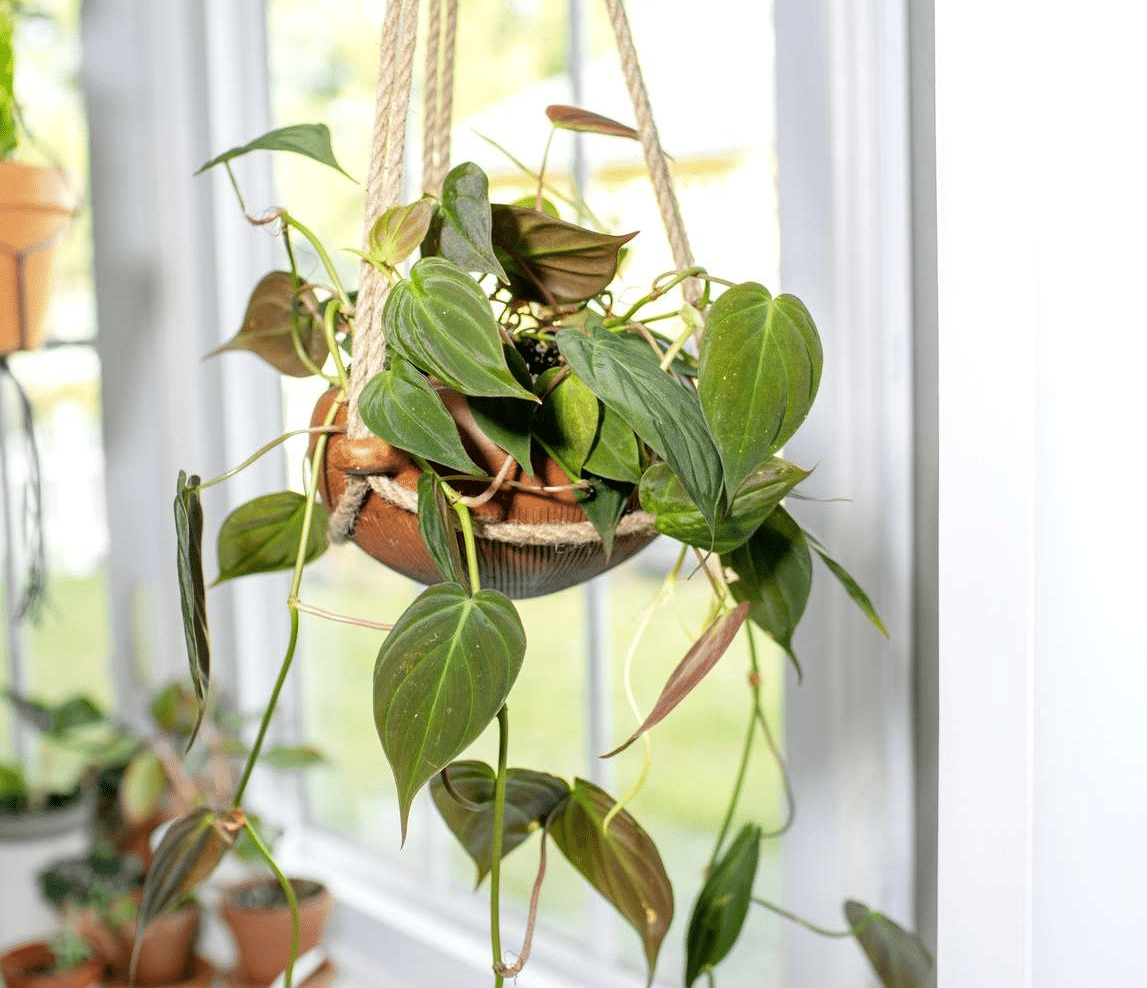
Temperature & Humidity Needs
Philodendron Micans prefers temperatures between 65°F and 85°F (18°C to 29°C). It can tolerate average household humidity levels, but it appreciates higher humidity. Increase humidity by misting the leaves or using a humidifier, especially in drier environments, to create a more favorable growing environment for your Philodendron Micans.
Fertilizing
Fertilize your Philodendron Micans with a balanced, water-soluble fertilizer diluted to half strength. Apply the fertilizer every 2-4 weeks during the growing season (spring and summer). Follow the package instructions for proper dilution and application. Avoid over-fertilizing, as it can lead to nutrient burn or other issues. Make sure your plant soil is moist before adding your fertilizer.
Pruning Method
To prune your Philodendron Micans, follow these steps:
● Use clean and sharp pruning shears or scissors to avoid tearing or damaging the plant. Sterilizing the tools with rubbing alcohol before use is recommended to prevent the spread of diseases.
● Cut back any long, leggy vines to encourage bushier growth and maintain a more compact shape. Identify a node (a swollen area where leaves emerge) along the vine, and make a clean cut just above it.
● Trim off any yellowing, brown, or damaged leaves by cutting them as close to the main stem as possible. This helps redirect the plant's energy towards healthier foliage.
● If your Philodendron Micans is becoming unruly or outgrowing its space, selectively prune to maintain the desired shape and size. Trim back any excessive growth or wayward vines to keep the plant neat and manageable.
How to Propagate Philodendron Micans
To propagate Philodendron Micans, you can follow these steps:
● Select a Healthy Stem: Choose a healthy stem with a few leaves that you want to propagate. Look for a stem with at least one node, which is a small bump on the stem where leaves or roots emerge.
● Prepare the Cutting: Using clean and sharp pruning shears or scissors, make a clean cut just below a node. The cutting should be around 4-6 inches long, with at least one or two sets of leaves.
● Remove Lower Leaves: Remove the lower leaves on the cutting, leaving only a few leaves at the top. This helps reduce moisture loss and focus the plant's energy on root development.
● Optional: Apply Rooting Hormone (optional): If desired, you can dip the cut end of the stem in a rooting hormone powder or gel. This can help stimulate root growth, but it is not necessary for Philodendron Micans as they typically root easily without it.
● Choose Propagation Method: You can do Philodendron Micans propagation in water or directly in well-draining soil.
● Water Propagation: Place the cut end of the stem in a container of clean water, ensuring that the node is submerged. Keep the container in a warm and well-lit area, but away from direct sunlight. Change the water every few days to prevent stagnation and provide oxygen.
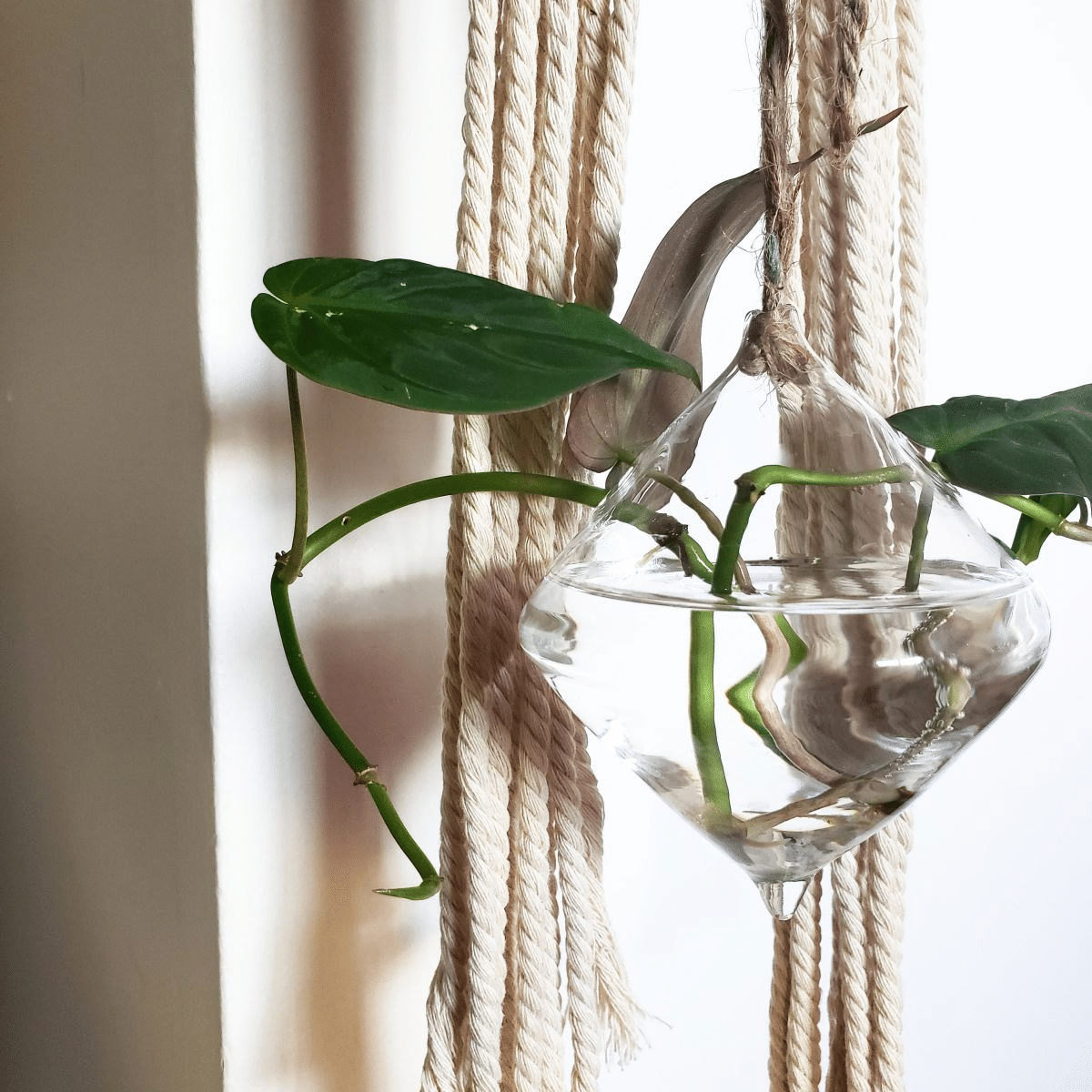
● Soil Propagation: Insert the cut end of the stem into a small pot or container filled with a well-draining potting mix. Keep the soil slightly moist but not overly wet. Cover the pot with a plastic bag or place it in a propagator to create a humid environment.
● Maintain the Propagation: Regardless of the method chosen, ensure that the cutting receives indirect light and remains in a warm environment. Mist the leaves occasionally to increase humidity and prevent drying.
Philodendron Micans Varieties
Philodendron Plowmanii
Also known as Philodendron Silver Sword, this variety features long, silver-green leaves with a slightly ruffled texture. It has a trailing growth habit and can be grown as a hanging plant or trained to climb with support. Like Philodendron Micans, it prefers bright, indirect light and well-draining soil.
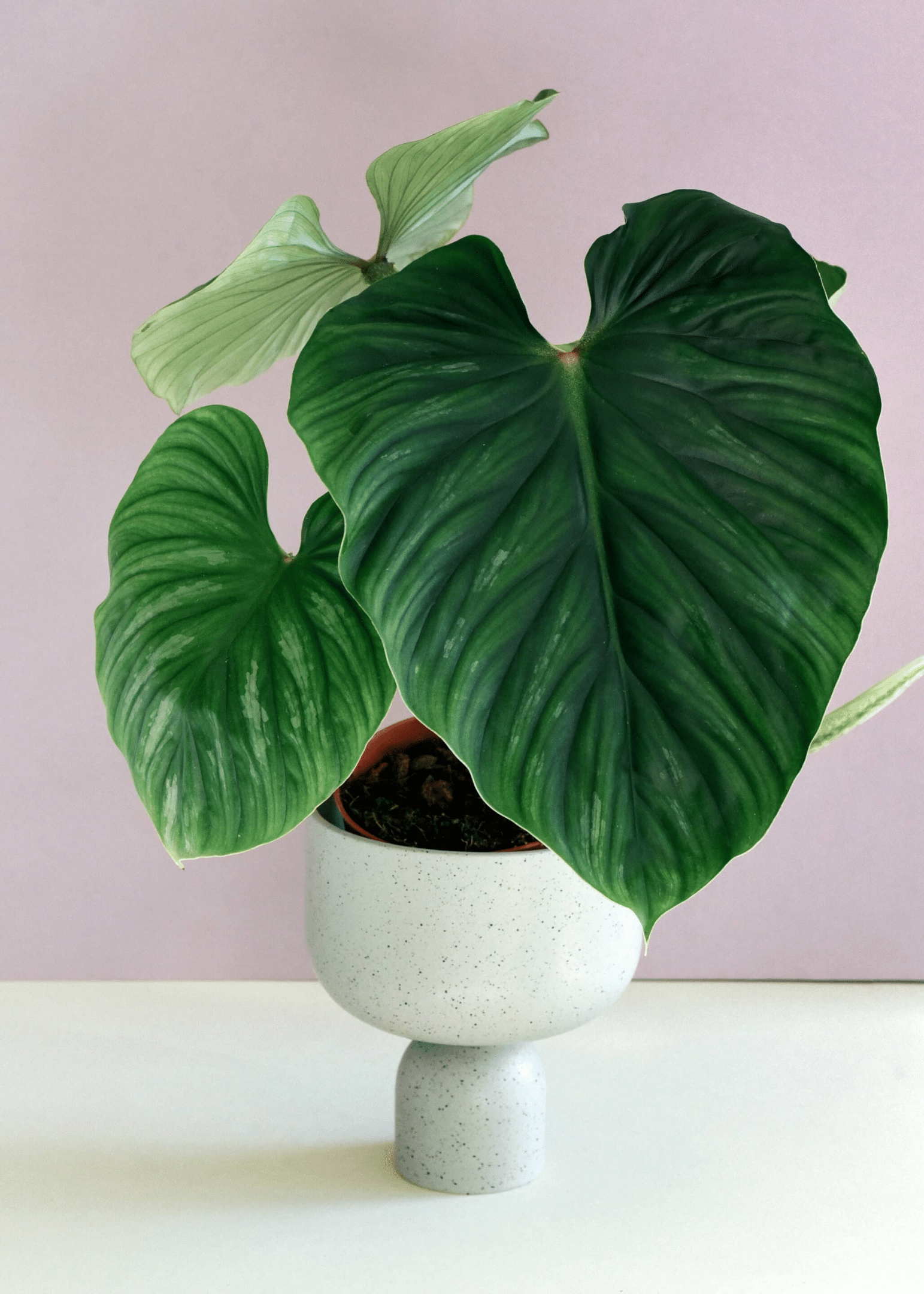
Philodendron Birkin
Philodendron Birkin is characterized by its striking foliage with dark green leaves and distinct creamy-white pinstripes. It is a compact variety that grows slowly and is well-suited for tabletops or shelves. It thrives in bright, indirect light and requires well-draining soil.
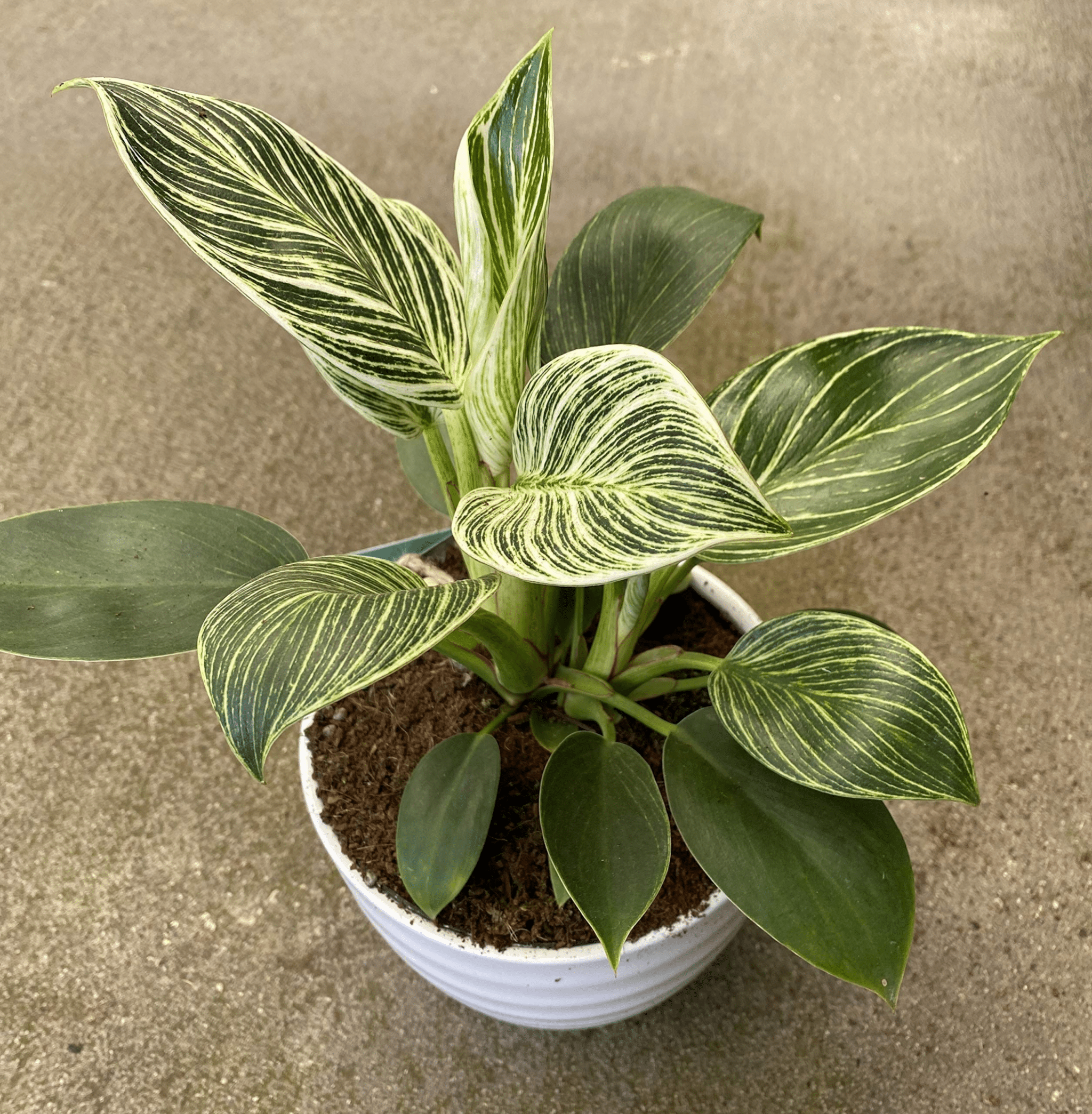
Philodendron Pink Princess:
Philodendron Pink Princess is a highly sought-after variety known for its stunning foliage. Its leaves display variegation in shades of green, dark purple, and pink. While it shares similar care requirements with other Philodendron varieties, it tends to require slightly higher humidity levels to maintain its vibrant coloration.

Philodendron Brasil (Philodendron hederaceum ‘Brasil'):
This variety showcases heart-shaped leaves with vibrant green coloration and yellow variegation. It is a fast-growing trailing plant that can be grown in hanging baskets or allowed to climb with support. Philodendron Brasil prefers bright, indirect light and well-draining soil, and it can tolerate slightly lower humidity levels.

Philodendron Rojo Congo:
Philodendron Rojo Congo features large, glossy leaves with a deep burgundy coloration. It is a compact variety that can be grown as a tabletop or floor plant. It thrives in bright, indirect light and requires well-draining soil. Philodendron Rojo Congo appreciates higher humidity levels and regular misting to maintain its vibrant foliage.
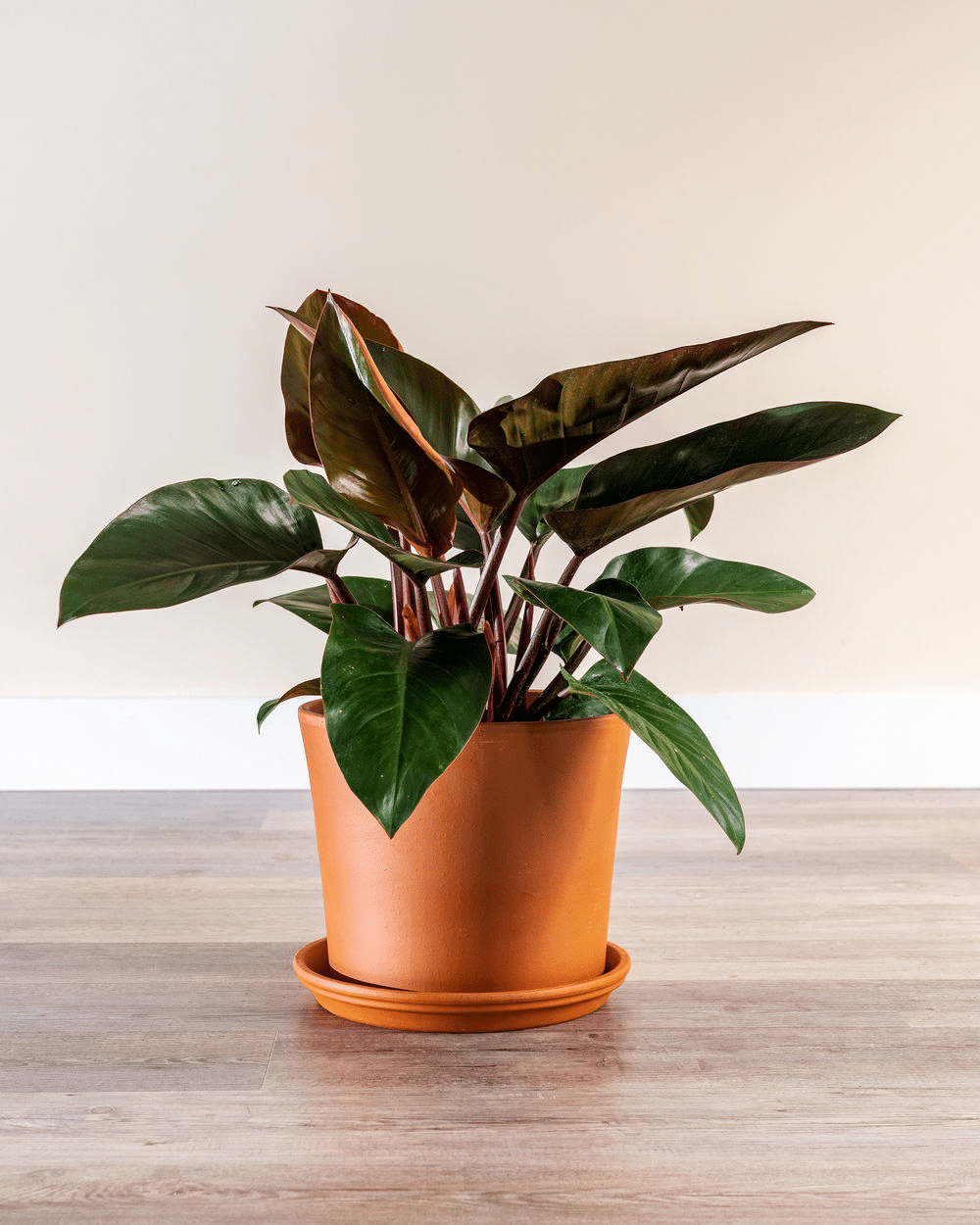
Common Philodendron Micans Problems
From pest infestations to leaf discoloration, understanding and addressing these issues promptly can help ensure the health and vitality of your plant.
Here are some common problems you may encounter with Philodendron Micans and how to resolve them.
Growing
When growing Philodendron Micans, common problems include overwatering, underwatering, yellowing leaves, pest infestations, and leggy growth. To address these issues: water the plant only when the top inch of soil is dry, ensure proper drainage to prevent root rot, adjust the watering frequency as needed, inspect for pests regularly, and provide bright, indirect light to prevent leggy growth.
Diseases
Leaf Spot Diseases: Leaf spot diseases, caused by fungal pathogens, can appear as brown or black spots on the leaves of Philodendron Micans. To manage leaf spot, remove affected leaves and ensure good air circulation around the plant. Avoid overhead watering and try to water at the base of the plant to minimize moisture on the foliage. Fungicidal treatments may be necessary in severe cases.
Root Rot: Overwatering or poorly-draining soil can lead to root rot in Philodendron Micans. It is characterized by rotting or mushy roots and a decline in plant health. To prevent root rot, ensure proper drainage by using well-draining soil and pots with drainage holes. Allow the top inch of soil to dry out between waterings and avoid overwatering. If root rot is detected, trim away affected roots, repot in fresh soil, and adjust the watering routine.
Pests
Philodendron Micans can be susceptible to common houseplant pests. Here are a few pests you may encounter and how to deal with them:
● Spider Mites: Spider mites are tiny pests that can cause webbing, yellowing leaves, and stunted growth. To eliminate spider mites, rinse the leaves with water or use insecticidal soap. Increase humidity around the plant to discourage mite infestations.
● Mealybugs: Mealybugs are small, cottony insects that cluster in leaf nodes and stems. Use a cotton swab dipped in rubbing alcohol to remove them manually. Alternatively, apply insecticidal soap or neem oil to control the infestation.
● Scale Insects: Scale insects appear as small, round bumps on stems and leaves. Remove them by gently scraping them off with a soft cloth or use horticultural oil or insecticidal soap to control their population.
Regularly inspect your Philodendron Micans for signs of pests, especially on the underside of leaves and along stems. Isolate affected plants if necessary and treat them promptly to prevent pests from spreading to other plants. Maintaining good plant hygiene, providing proper air circulation, and ensuring a healthy growing environment can help prevent pest infestations in the first place.
FAQ's –
Are philodendron micans hard to take care of?
Philodendrons are known to be easy to care for and have low maintenance requirements.
Do philodendron Micans climb or hang?
Philodendron Micans are avid climbers and can benefit from something to climb on.
Is Philodendron Micans Toxic to Animals?
Yes, Philodendron Mican is toxic to cats, dogs, and horses.
Are Philodendron Micans fast growing?
Yes, these plants are known to be fast growers and can grow up to three feet in a year.

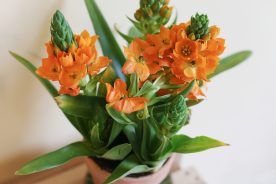



No Comments